
August Macke
German Expressionist Painter
1887 - 1914

August Macke was one of the leading members of the German Expressionist group Der Blaue Reiter (The Blue Rider). He lived during a particularly innovative time for German art which saw the development of the main German Expressionist movements as well as the arrival of the successive avant-garde movements which were forming in the rest of Europe. Like a true artist of his time, Macke knew how to integrate into his painting the elements of the avant-garde which most interested him.
August Robert Ludwig Macke was born in Germany on 3 January 1887, in Meschede, Westphalia. He was the youngest child and only son of August Friedrich Hermann Macke (1845-1904), a building contractor and amateur artist, and his wife, Maria Florentine, née Adolph, (1848-1922), who came from a farming family in Westphalia's Sauerland region. Shortly after August's birth the family settled at Cologne, where Macke was educated at the Kreuzgymnasium (1897-1900) and became a friend of Hans Thuar, who would also become an artist. In 1900, when he was thirteen, the family moved to Bonn, where Macke studied at the Realgymnasium and became a friend of Walter Gerhardt and Gerhardt's sister, Elisabeth, whom he would marry a few years later. The first artistic works to make an impression on the boy were his father's drawings, the Japanese prints collected by his friend Thuar's father and the works of Arnold Bocklin which he saw on a visit to Basel in 1900. In 1904 Macke's father died, and in that year Macke enrolled at the Kunstakademie Düsseldorf, under Adolf Maennchen (1904-1906). During this period he also took evening classes under Fritz Helmut Ehmke (1905), did some work as a stage and costume designer at the Schauspielhaus Düsseldorf, and visited northern Italy (1905) and Netherlands, Belgium and Britain (1906).
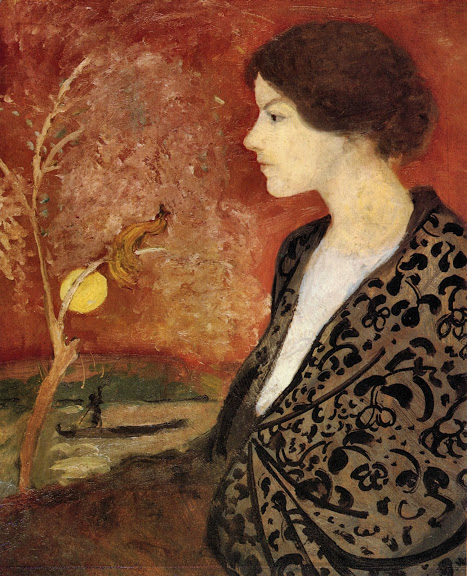
Thereafter Macke lived most of his creative life in Bonn, with the exception of a few periods spent at Lake Thun in Switzerland and various trips to Paris, Italy, the Netherlands and Tunisia. In Paris, where he traveled for the first time in 1907, Macke saw the work of the Impressionists, and shortly after he went to Berlin and spent a few months in Lovis Corinth's studio. His style was formed within the mode of French Impressionism and Post-impressionism and later went through a Fauve period. In 1909 he married Elisabeth Gerhardt. In 1910, through his friendship with Franz Marc, Macke met Kandinsky and for a while shared the non-objective aesthetic and the mystical and symbolic interests of Der Blaue Reiter.

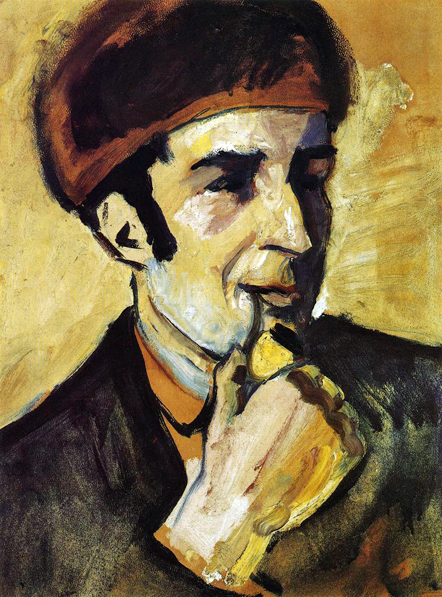
Macke's meeting with Robert Delaunay in Paris in 1912 was to be a sort of revelation for him. Delaunay's chromatic Cubism, which Apollinaire had called Orphism, influenced Macke's art from that point onwards. His Shops Windows can be considered a personal interpretation of Delaunay's Windows, combined with the simultaneity of images found in Italian Futurism. The exotic atmosphere of Tunisia, where Macke traveled in April 1914 with Paul Klee and Louis Moilliet was fundamental for the creation of the luminist approach of his final period, during which he produced a series of works now considered masterpieces. August Macke's oeuvre can be considered as Expressionism (in its original German flourishing between 1905 and 1925), and also as part of Fauvism. The paintings concentrate primarily on expressing feelings and moods rather than reproducing objective reality, usually distorting colour and form.
Macke's career was cut short by his early death in the second month of the First World War at the front in Champagne, France, on 26 September 1914. His final painting, Farewell, depicts the mood of gloom that settled after the outbreak of war.
Quoted From: August Macke - Wikipedia
In a letter of 1911 to August Macke, Franz Marc addressed his friend with a nobilitating "August Vonderfarbe" (as who should say, Monsieur de Couleur), very aptly characterizing Macke's principal artistic concern. The two had met the year before in Munich. Their friendship, by which their art mutually profited, brought Macke in contact with the painters of the Blauer Reiter (especially Wassily Kandinsky and Alexei von Javlensky). However, Macke never shared their tendency to mystical considerations and metaphysical speculation. Rather than attributing abstract values and significances to colors as Marc did, Macke used them solely to express his own personal feelings and ideas.
When Marc praised him in his obituary as "the one who gave colors the brightest and purest tone of us all," he meant the elemental lucidity, order, and harmony that pervaded Macke's art. It was not a spiritualization of nature, but what he called a "joyful living through of nature" that determined his approach. This explains why seeing a show of the works of Matisse, in Munich in 1911, was so important to Macke, for it confirmed his own love of brilliant color and simplified form. The decisive influence on his work, however, came after he had become familiar with Cubism and Futurism, and seen the paintings of Edvard Munch. This influence was Robert Delaunay, whom he and Marc visited in Paris in 1912.
A combination of German and French influences is seen in Clown in the Circus of that year, a rare example of a decidedly graphic and caricaturist approach in Macke's watercolor work. What intrigued him in Delaunay was that artist's Window Pictures (1912), with their transparent, facetted planes of pure color and their definition of space by means of color alone. Creating "living" color, wrote Macke, and discovering the "space defining energies of color... that is our finest goal."
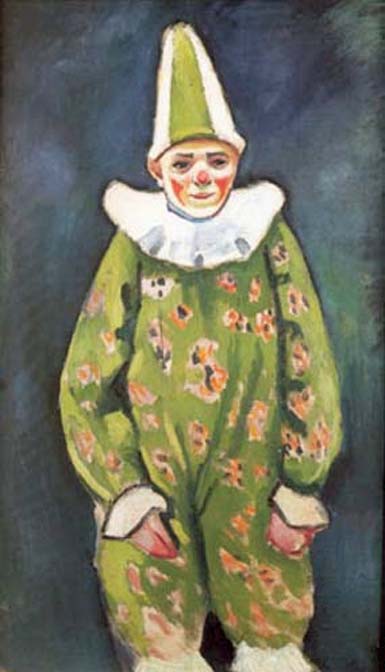
He already achieved it in his watercolor Fashion Window of 1913. The prismatic hues, complementary color contrasts, and the prominent use of lettering, in the "Mode" sign, all strongly recall Delaunay, but the effect of the whole is inimitably Macke. Unlike the French artist, he did not search for "a new reality" (Delaunay's words) behind the window but attempted to create a visual metaphor for a beautiful, sunny, yet very real and ordinary day.
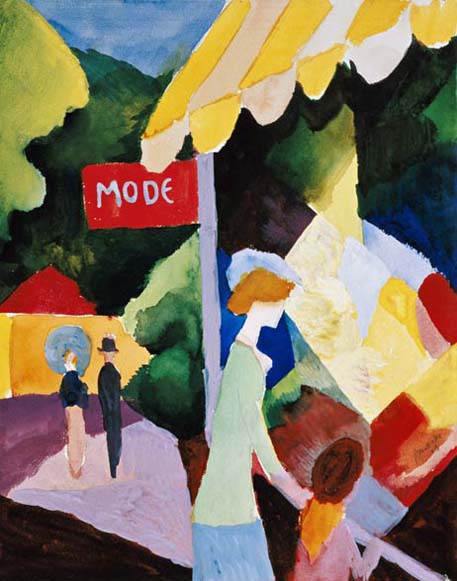
Lady in a Green Jacket, done during a stay at Thun Lake in 1913, shows an especially harmonious arrangement of form and a fine equilibration of color. A year later, the alternation among statuesque figures, softly rendered foliage and grass, and blocky, Cubistic houses in the background, gave way to the more atmospheric approach of Man Reading in the Park (1914). Here, as G. Vriesen notes, "corporeality dissolves in light and ambient atmosphere ... without, however, forfeiting vital objective presence. An organic vibration of air, space and illumination, an emerging and passing away, a blurring and inter-merging, dominate the picture."

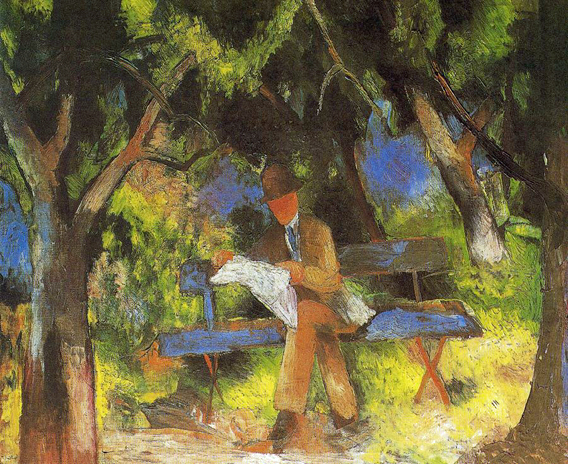
One of Macke's last paintings was the unfinished work that now bears the title Farewell. "With absolute clarity," Vriesen states, "the picture reflects the gloom and numbness that befell public life" before the first year of war was out, "the mood of uncertainty and disquiet which took possession of Macke as well."
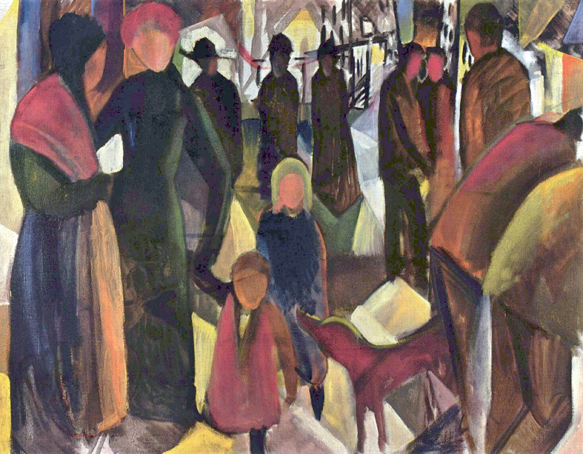
From: 20th Century Art - Museum Ludwig Cologne
Quoted From: August Macke - Archive


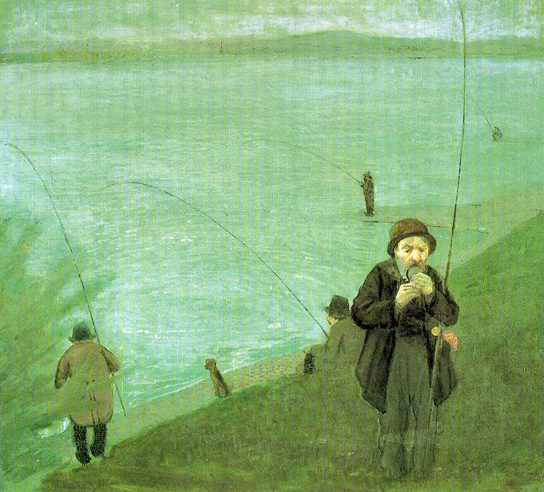
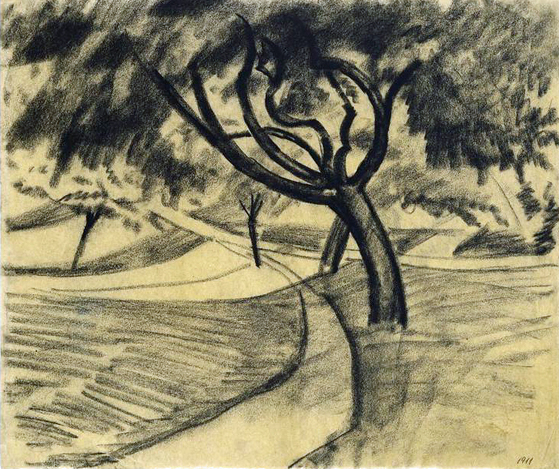




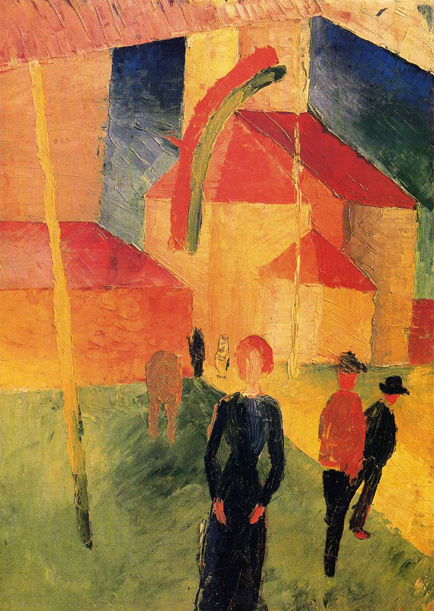
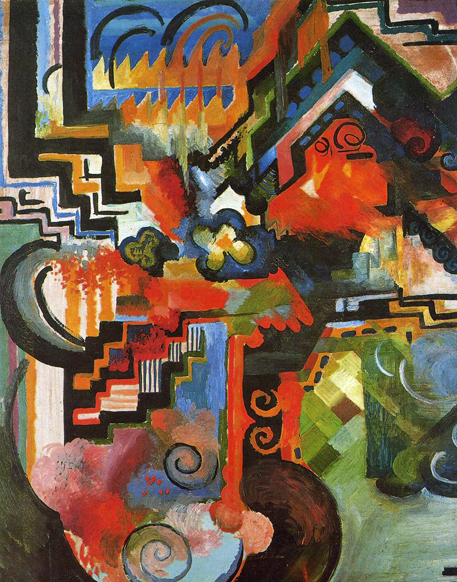
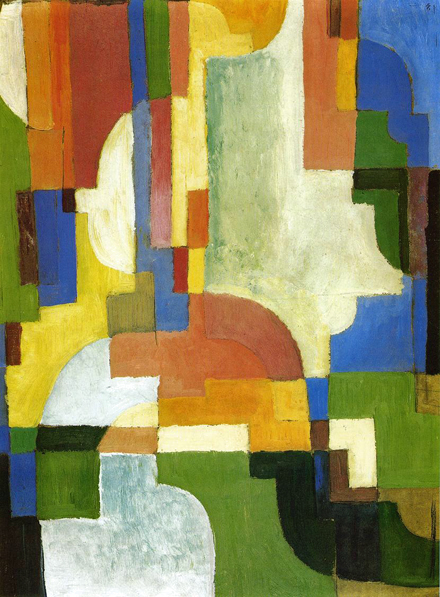
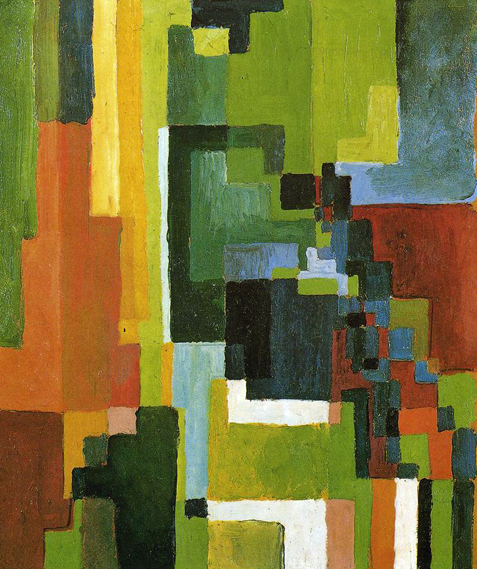

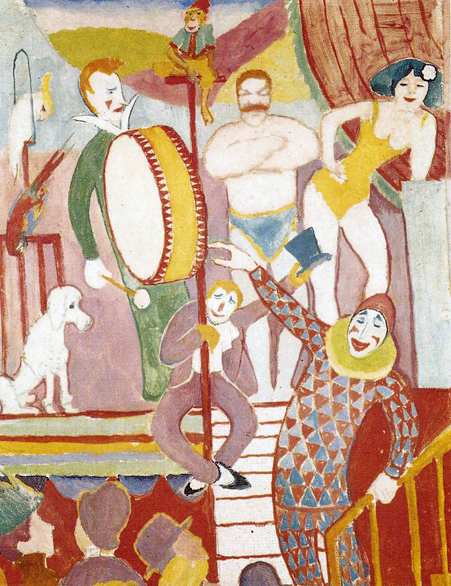

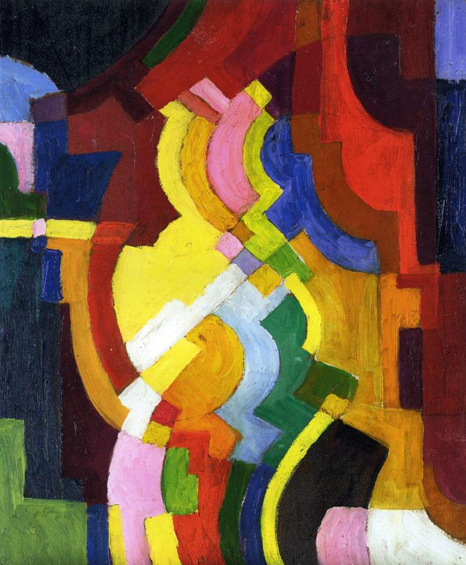
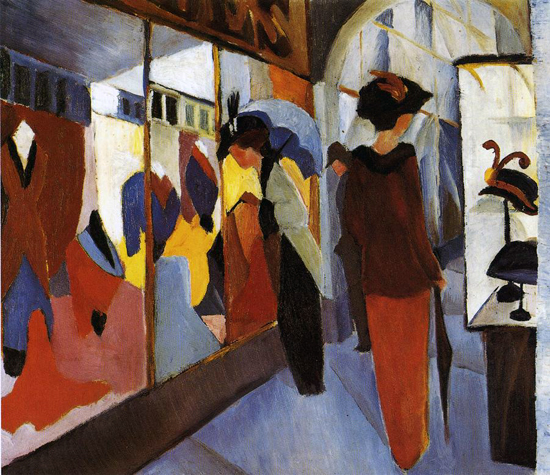
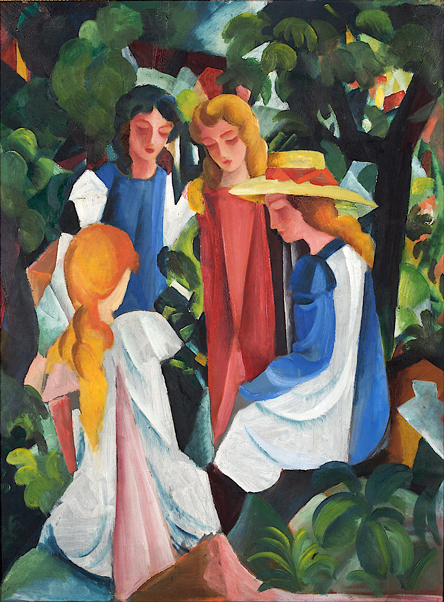
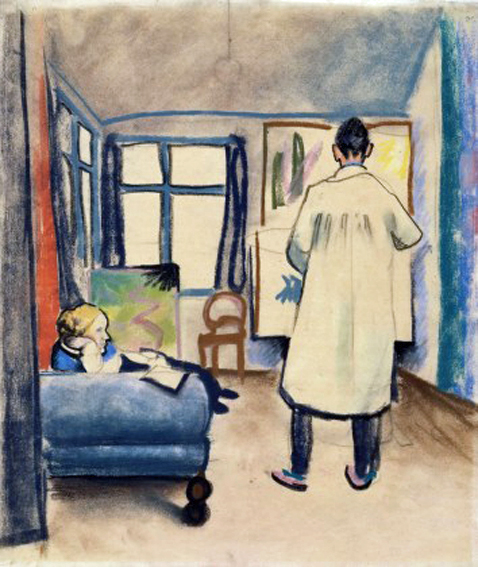
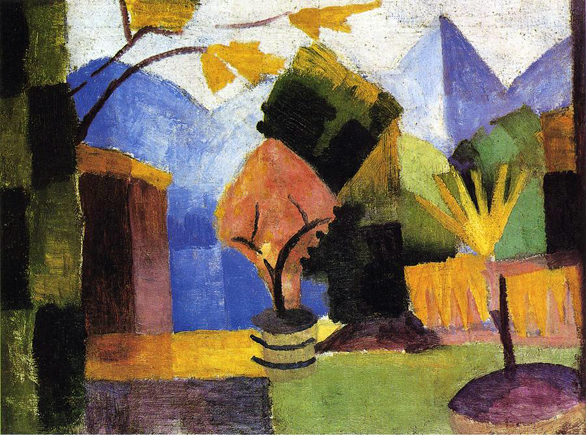
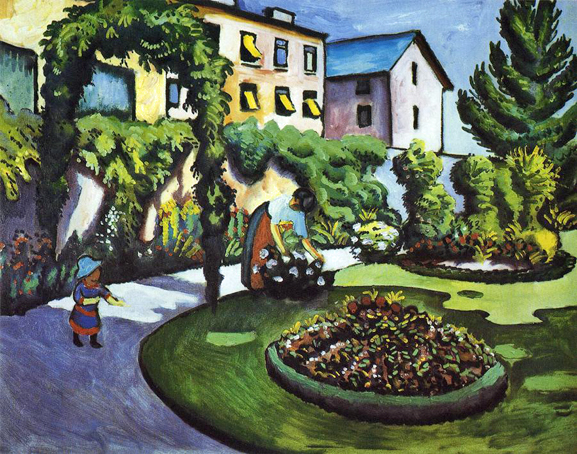
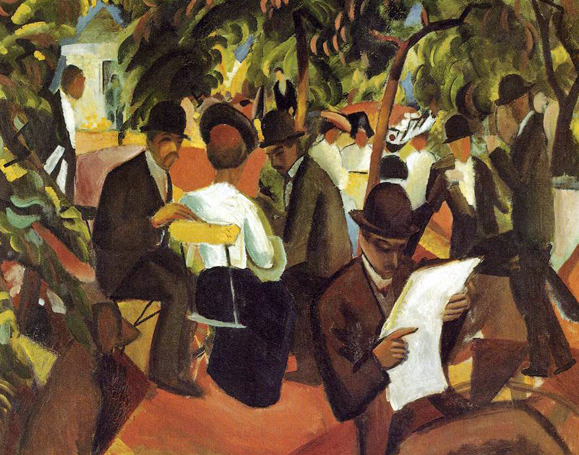
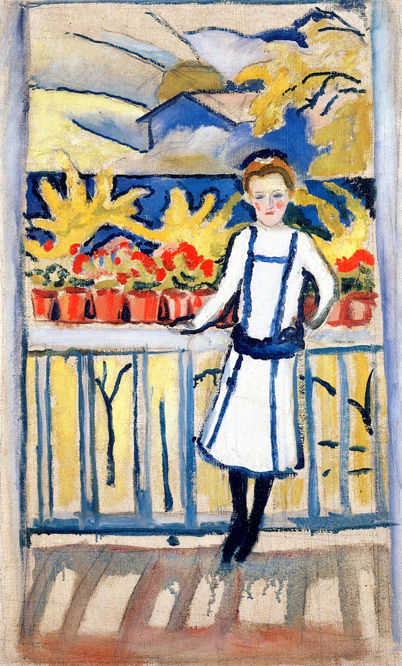



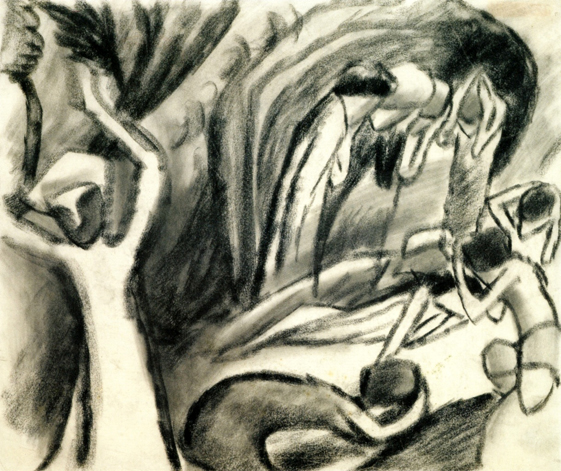
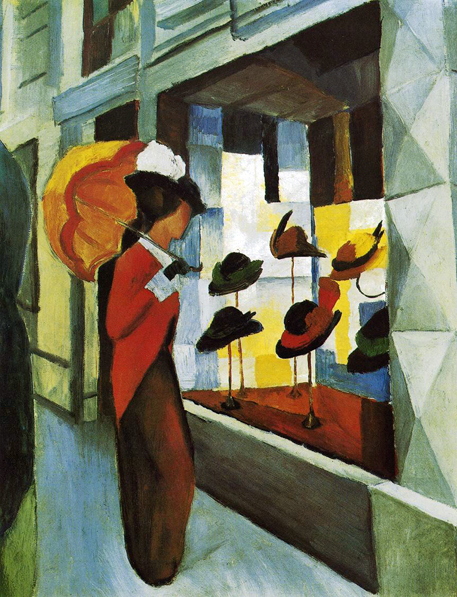
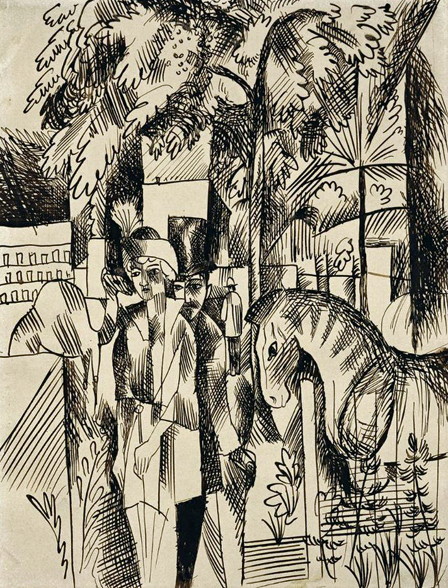
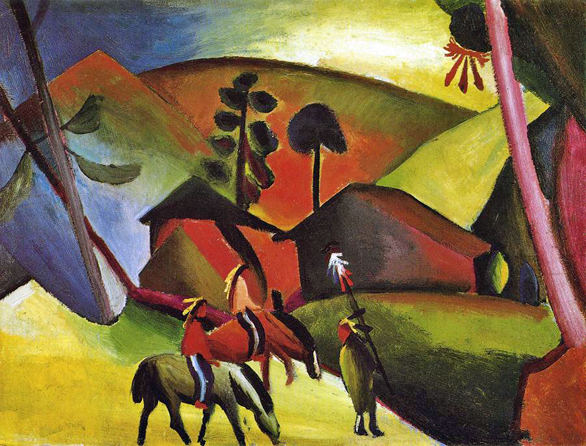
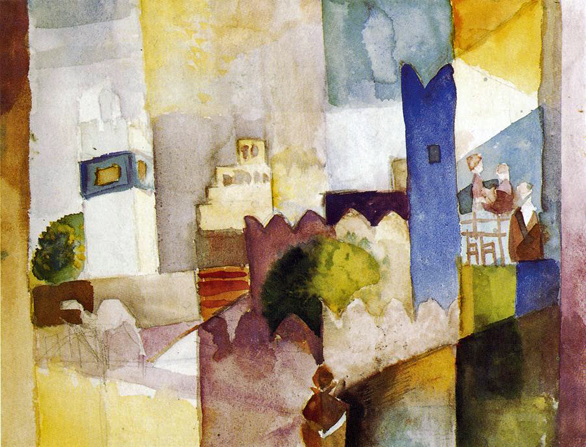
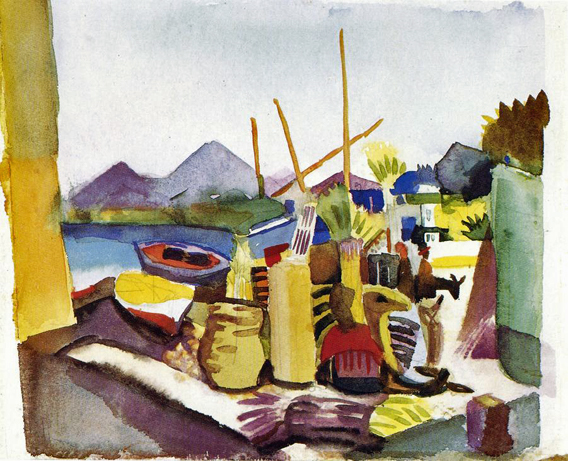
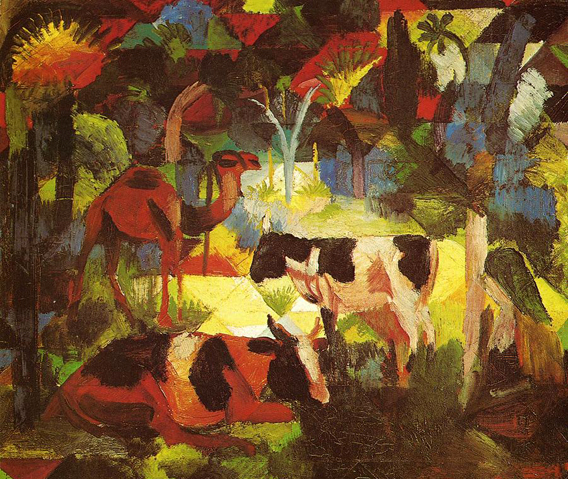
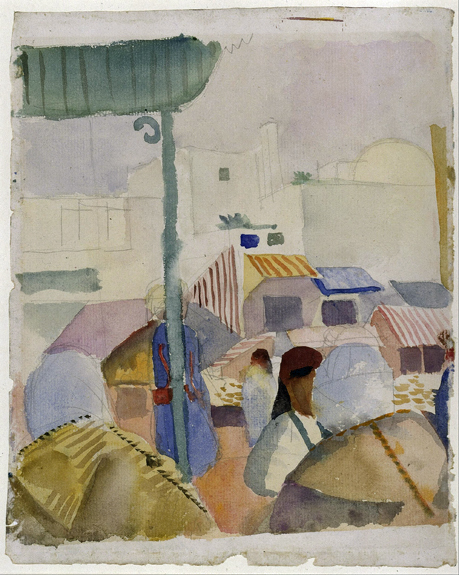
In April 1914, only months before his death, August Macke undertook his journey to Tunis together with Paul Klee and Louis Moilliet - a journey whose artistic fruits would later make it famous. Overwhelmed by the light and the colors of the North African landscape, Macke, Klee, and Moilliet began to draw and to paint watercolors on the morning of 8 April. Although Market in Tunis II […] is composed in a traditional manner, e.g. the figures and buildings are seen in linear perspective, the planar structure that has been constructed of colored segments dominates and contradicts a perspectival view. […] Macke devotes his attention to naturalistic details - such as the thick seams of the camel-hair coats (jebba) worn by the two Arabs, seen from the rear in the foreground, or the floral growths on the roofs of the buildings - and he also includes episodic events, such as the figure in the middle ground who is leaning on one of the columns supporting the balcony.
Quoted From: Goggle Art Project
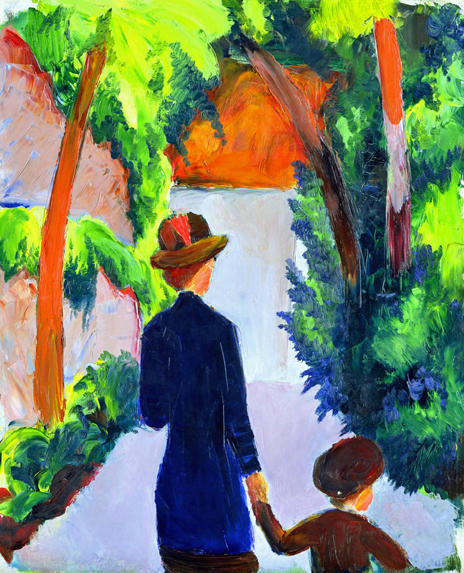
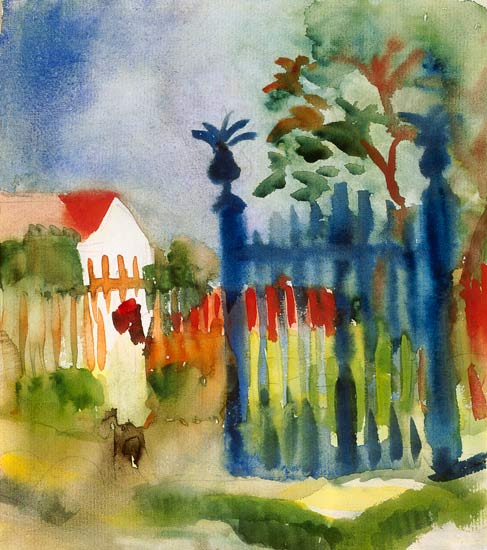

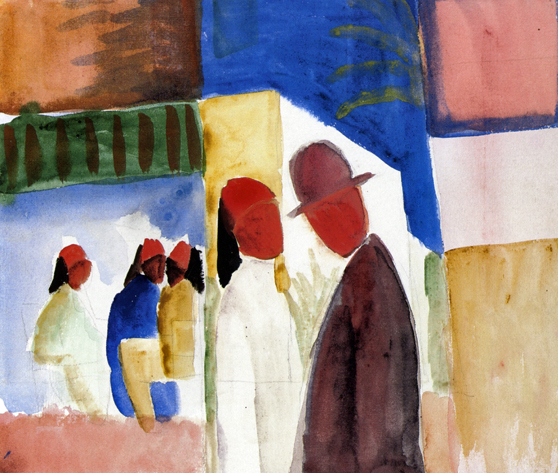
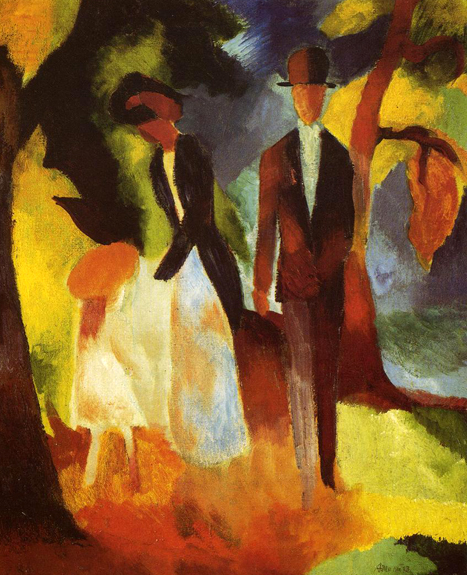
,_1913.jpg)
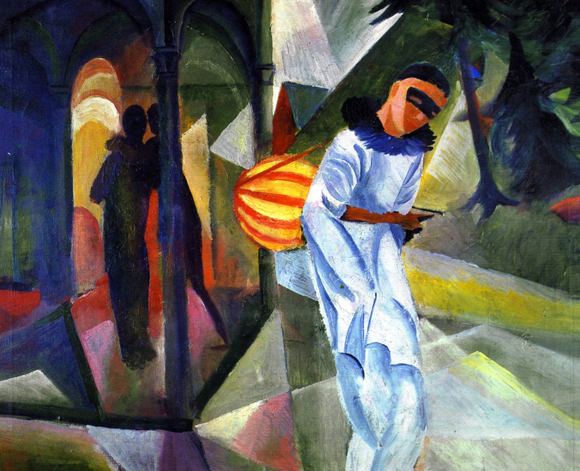
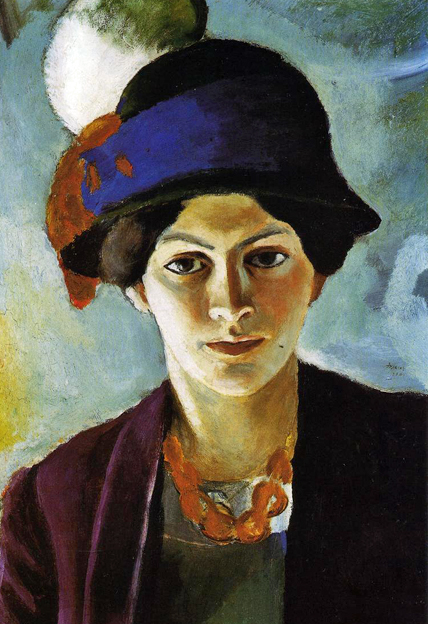
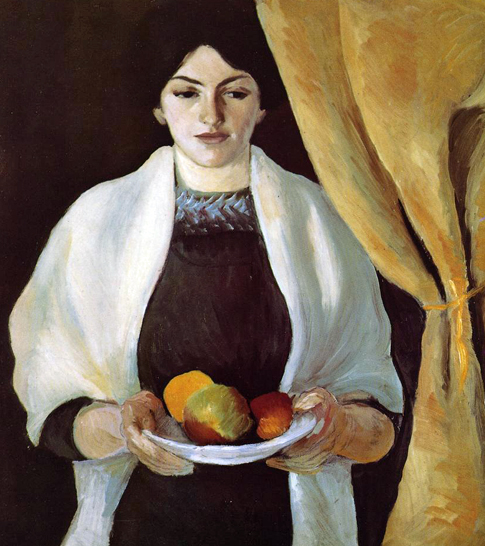
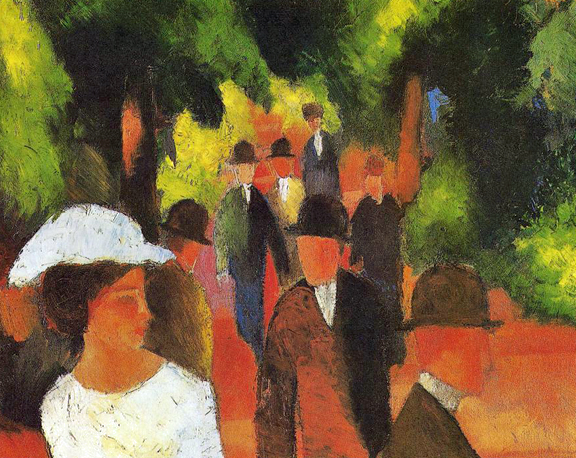



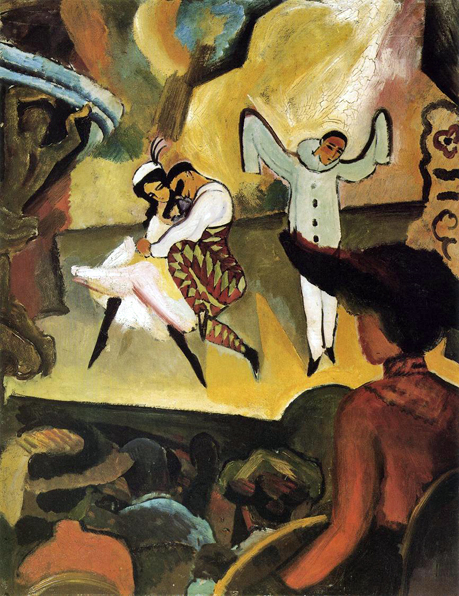
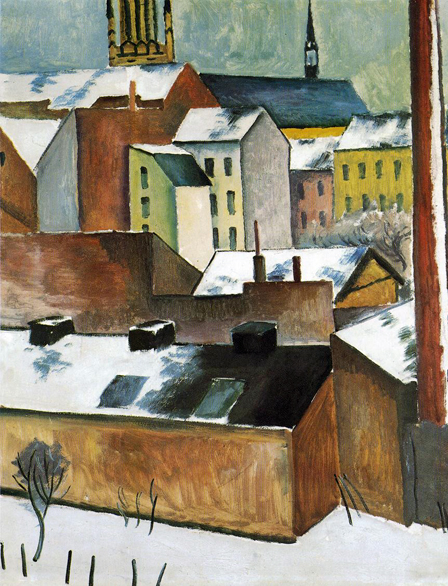

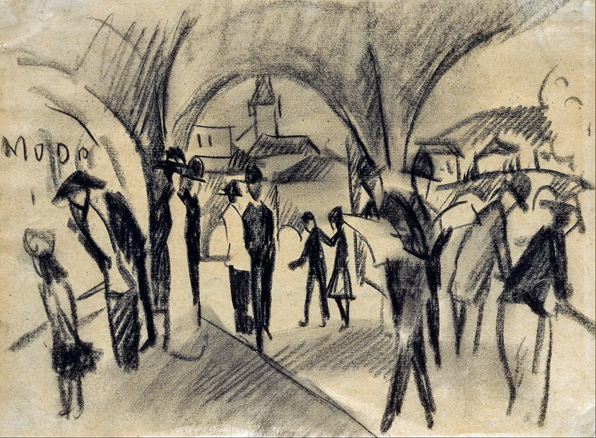
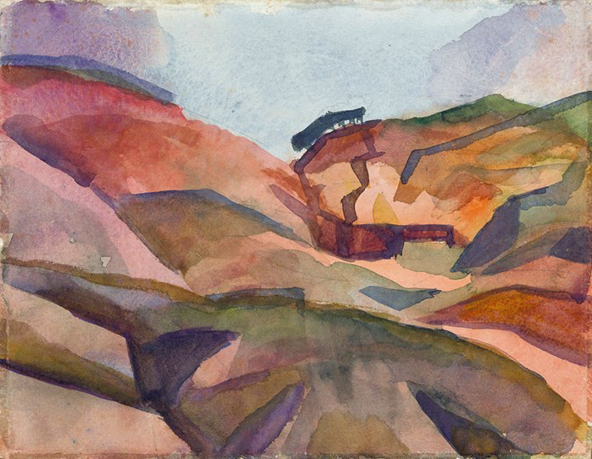

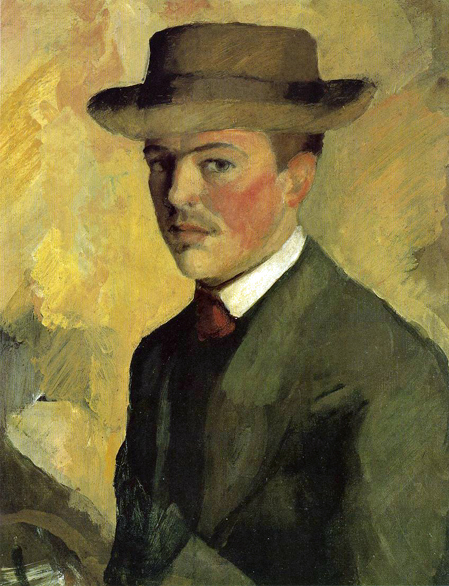
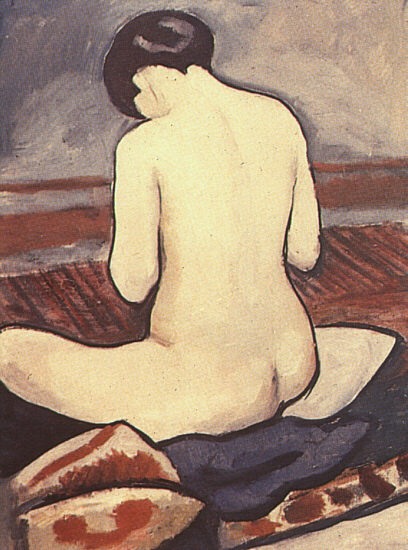
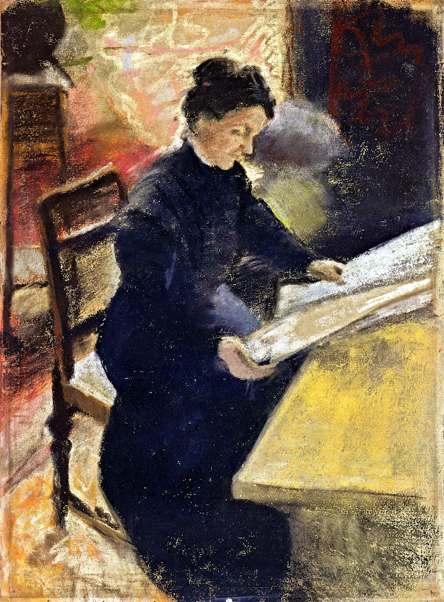
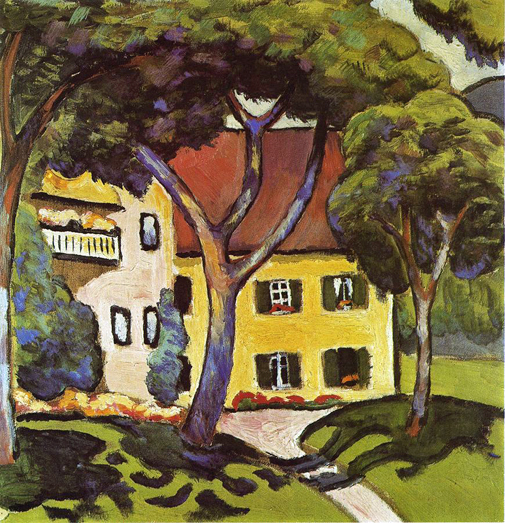

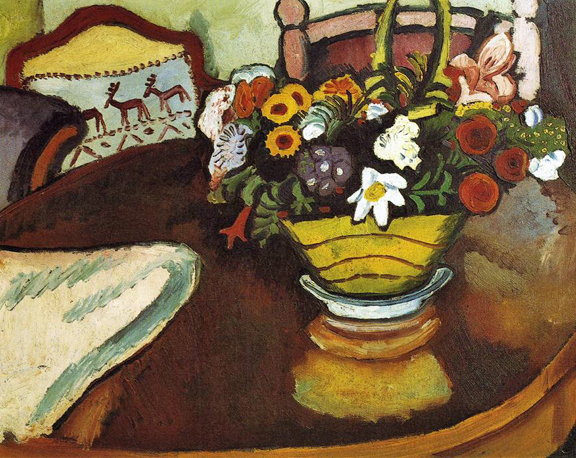

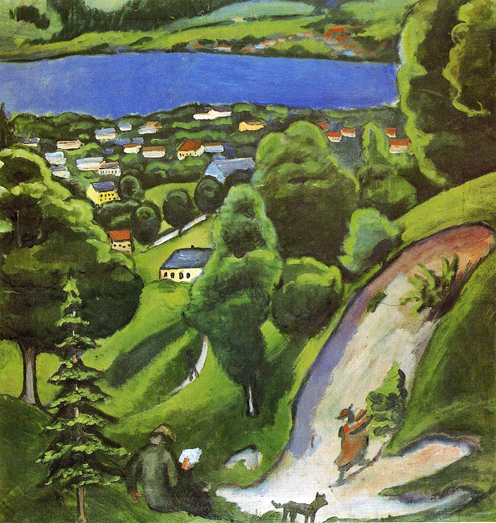
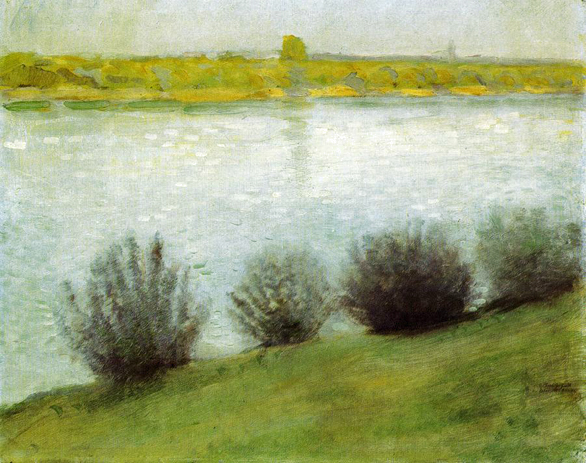
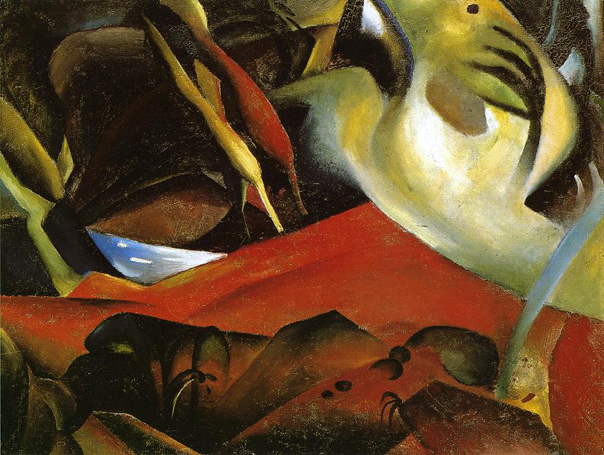

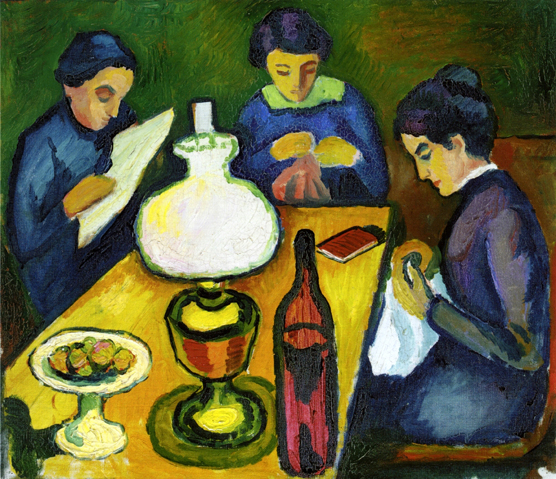
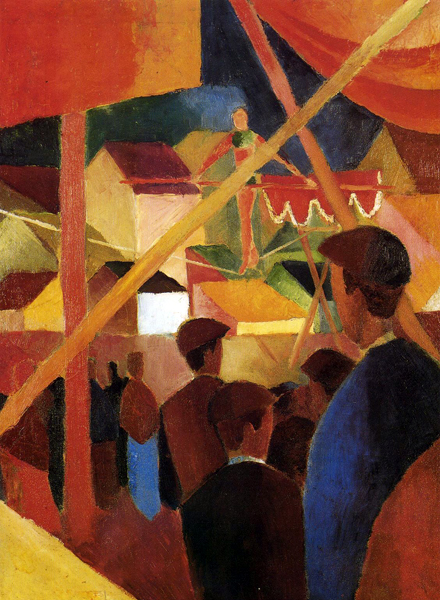
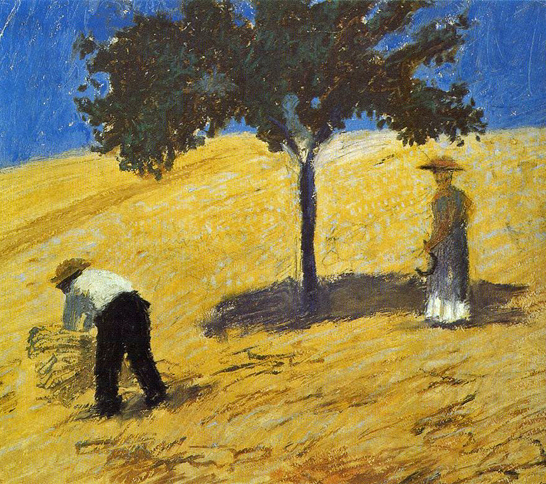
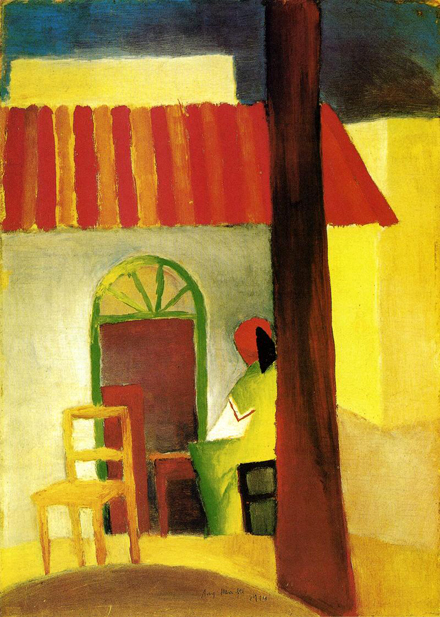

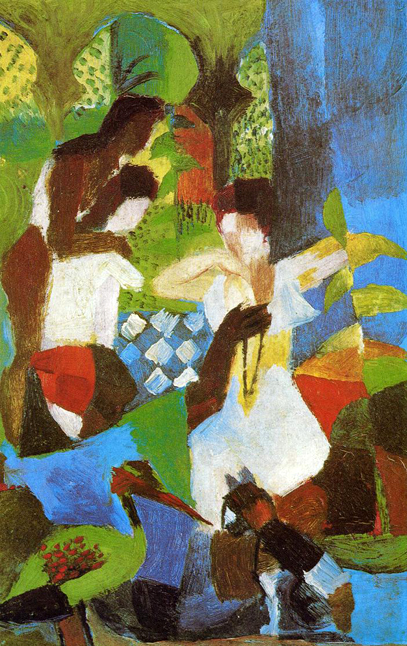
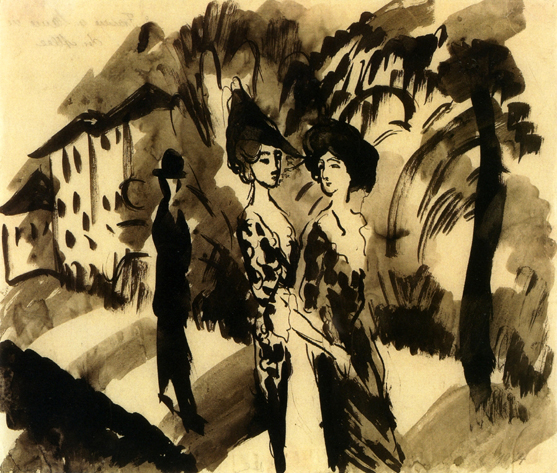
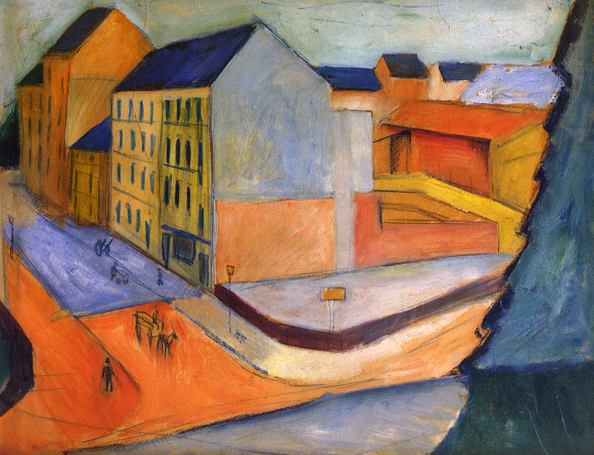
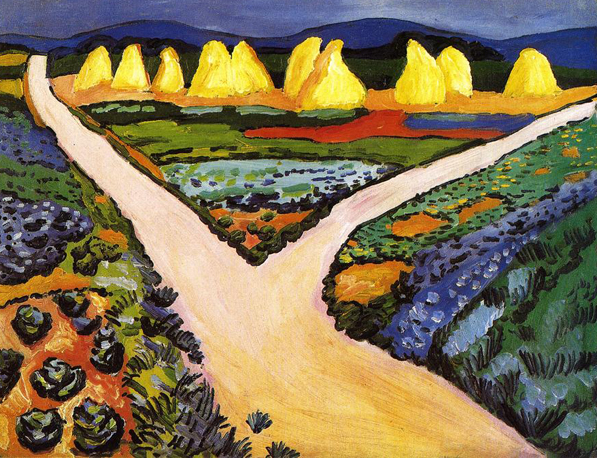
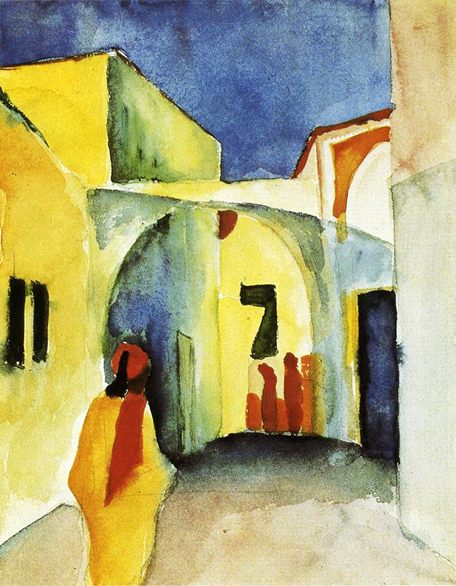
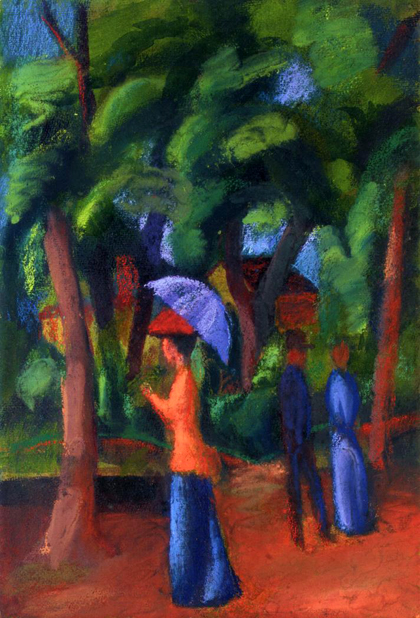
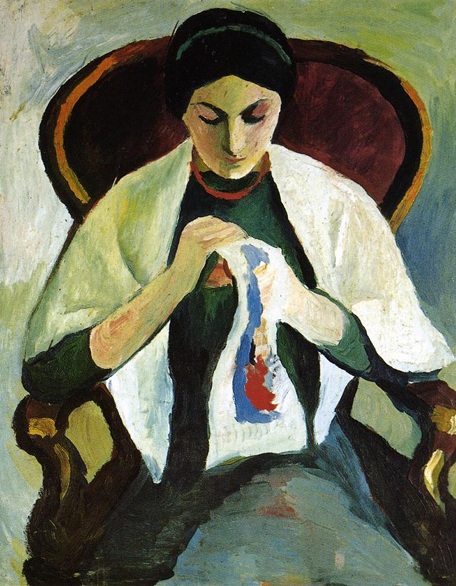
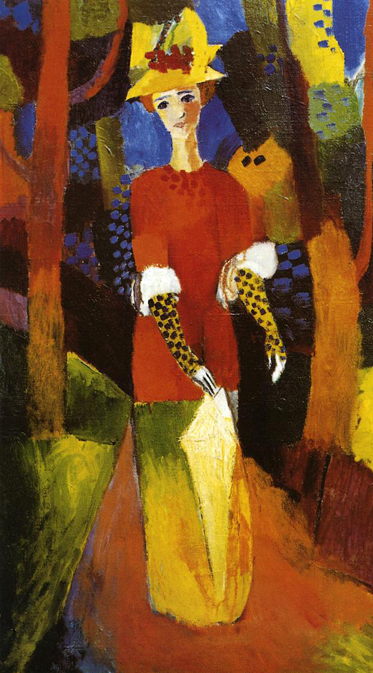
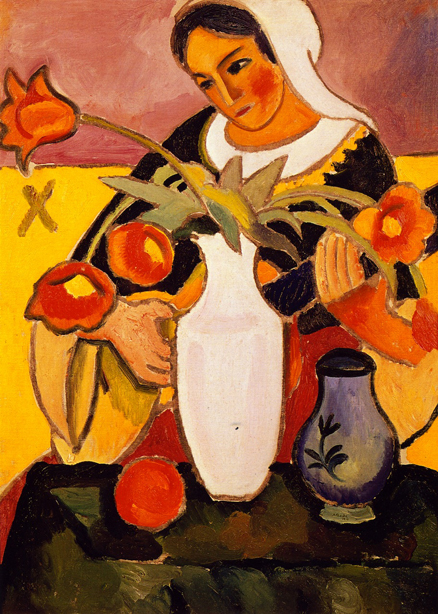
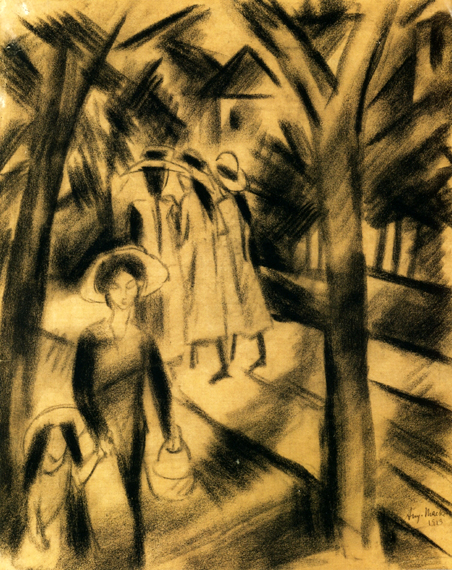

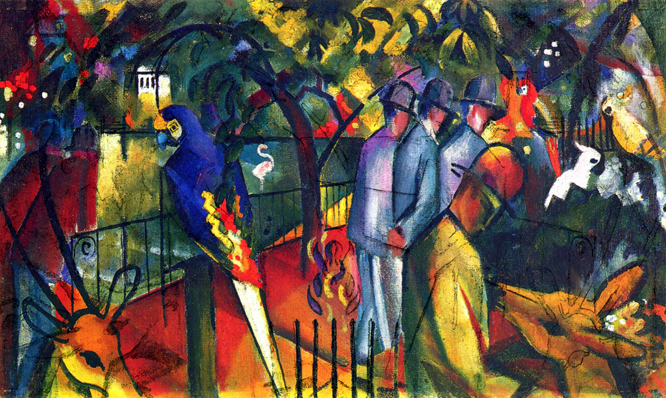
Related Source Material:
Displaying Artworks for August Macke - The Athenaeum
August Macke - Wikimedia Commons
Return to Pagina Artis
Return to Bruce and Bobbie's Main Page.